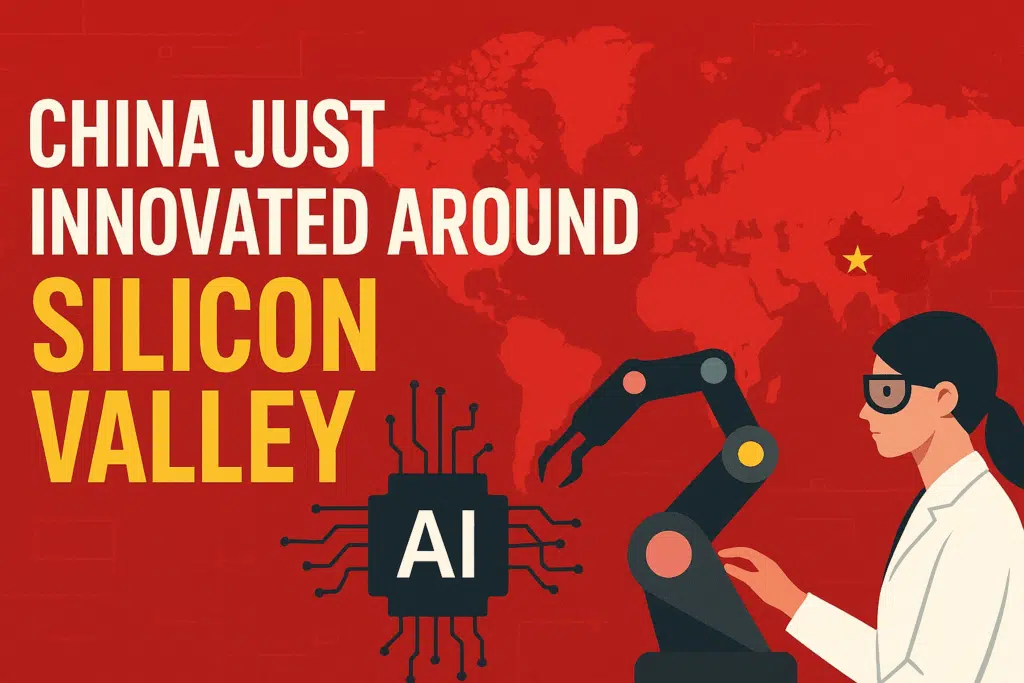A New Challenger Emerges
For decades, Silicon Valley has been the undisputed symbol of innovation. From the personal computer revolution to the birth of the smartphone era, the Bay Area has shaped the digital world. However, in recent years, a powerful force from the East has begun rewriting the rules. China is no longer just catching up; it is innovating in ways that could redefine the future of technology.
This transformation is not accidental. Driven by government support, massive domestic demand, and fierce competition among tech giants, China has developed unique innovations in AI, semiconductor technology, super app ecosystems, and green energy solutions. What was once considered a follower economy is now setting the pace in multiple industries — in some cases outpacing Silicon Valley entirely.
From Copycat to Pioneer – China’s Transformation
In the 2000s, China’s tech industry was often dismissed as a “copycat” sector. Western companies led in invention, while Chinese firms replicated these ideas for their massive home market. That perception no longer holds true.
Today, Chinese tech companies are pioneering products and services that have no direct Western equivalent. This includes advanced payment systems embedded into social media apps, AI-powered industrial automation, and even new chip designs that bypass Western intellectual property restrictions.
One of the key drivers behind this shift is the scale of China’s domestic market. With over a billion internet users, new ideas can be tested, refined, and scaled faster than almost anywhere else. This speed of iteration is a critical advantage over Silicon Valley, where market adoption can be slower and more segmented.
Innovating Around U.S. Export Restrictions
Perhaps the most telling sign of China’s tech maturity is its ability to innovate despite U.S. export controls. Restrictions on advanced semiconductor equipment and designs were intended to slow down China’s progress — but instead, they sparked a wave of domestic R&D.
Huawei’s Chip Breakthrough
In 2023, Huawei unveiled a processor that stunned industry analysts. Built without access to certain Western technologies, it matched — and in some cases exceeded — the performance of comparable chips from U.S. companies. This achievement signaled more than just technological skill; it showed China’s capacity to work around geopolitical barriers.
The Rise of Domestic Supply Chains
To support these innovations, China has rapidly developed a self-sufficient semiconductor supply chain. From wafer production to AI-focused chip design, domestic companies now handle steps once reliant on foreign imports. This trend not only boosts national resilience but also reshapes the global semiconductor landscape.
The Super App Advantage
While Silicon Valley is still refining app integration strategies, China has already mastered the “super app” model.
All-in-One Platforms
Tencent’s WeChat is the most famous example, blending messaging, mobile payments, e-commerce, mini-games, ride-hailing, and even government services into a single interface. This level of integration is unmatched in the West, where similar services are fragmented across multiple platforms.
ByteDance’s Algorithm Mastery
Another example is ByteDance, the company behind TikTok. Its AI-powered content recommendation system is so effective that it has redefined social media engagement globally. Western companies are scrambling to match this level of personalization and retention.
AI and Automation on a Massive Scale
Artificial Intelligence is a global race, and China is moving quickly. Beyond consumer applications like face recognition and voice assistants, China is deploying AI at an industrial scale.
- Smart Manufacturing: AI-driven robots and real-time analytics optimize production lines, cutting costs and improving efficiency.
- Smart Cities: Integrated AI systems manage traffic, energy use, and public safety in real time.
- Healthcare AI: Algorithms are being trained on massive datasets to improve diagnostics and predict disease outbreaks.
This wide application of AI reflects China’s top-down approach, where government initiatives accelerate adoption across industries.
Green Tech Leadership
Innovation is not limited to digital products. China leads in renewable energy technologies and is the largest producer of electric vehicle (EV) batteries.
- Battery Technology: Chinese companies like CATL have developed high-capacity, long-lasting batteries that power both domestic and international EV brands.
- Solar Power: China is also the top manufacturer of solar panels, exporting them worldwide and making renewable energy more affordable.
By investing heavily in sustainable technology, China is positioning itself as a climate technology superpower — a field where Silicon Valley has been slower to scale solutions.
What This Means for Silicon Valley
The rise of China’s innovation capacity forces Silicon Valley to rethink its strategies. It’s no longer enough to be the first to invent; companies must also adapt quickly, integrate services deeply, and operate on a global scale.
Western firms are now studying Chinese platforms for inspiration, particularly in areas like mobile payments, integrated ecosystems, and rapid product iteration. This cross-pollination of ideas could lead to a more competitive and diverse global tech environment.
The Future – A Multi-Center Tech World
The 21st-century tech race will not have a single winner. Instead, we are entering a multi-center innovation era, with hubs in North America, East Asia, and beyond.
China’s rise is not about replacing Silicon Valley but about expanding the boundaries of what’s possible. In this new reality, collaboration and competition will exist side by side — driving faster progress than ever before.
Conclusion
China’s innovation story is still unfolding, but one thing is clear: the balance of global tech power is shifting. Whether it’s AI breakthroughs, semiconductor resilience, or the super app revolution, China is no longer following — it’s leading in ways that even Silicon Valley must acknowledge.
The next decade will be defined not by where technology comes from, but by how quickly it can be scaled, adapted, and improved. And in that race, China has already proven it can set the pace



